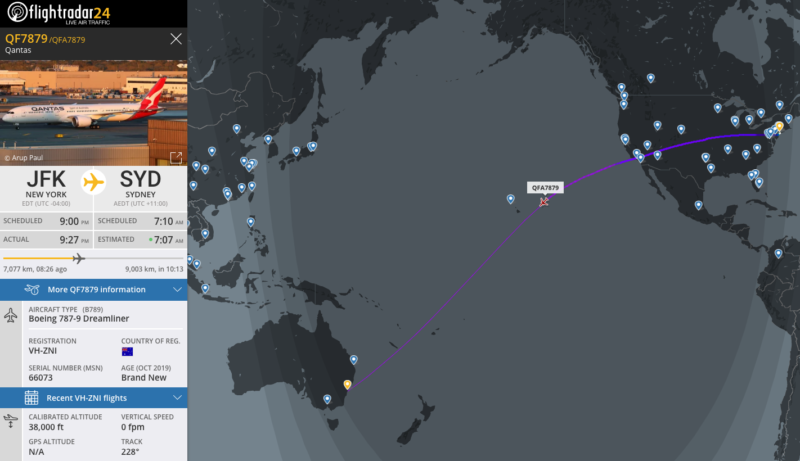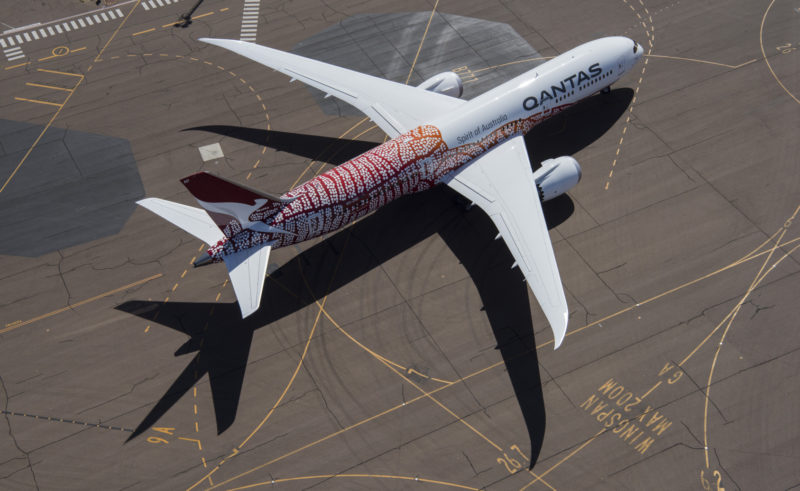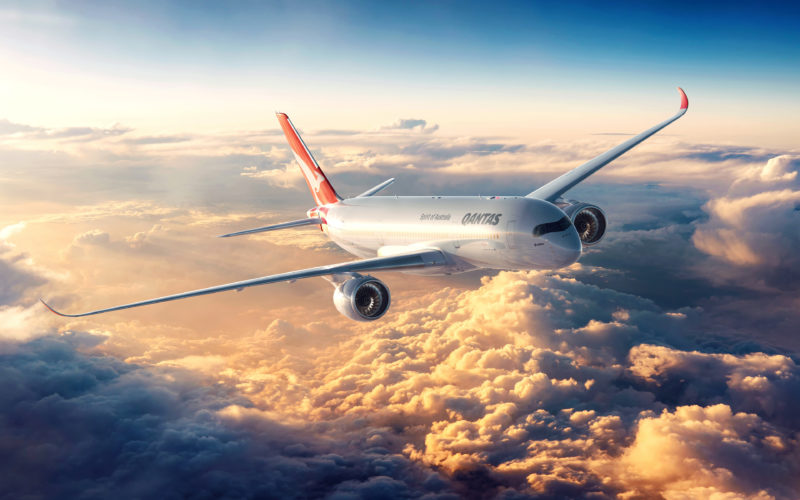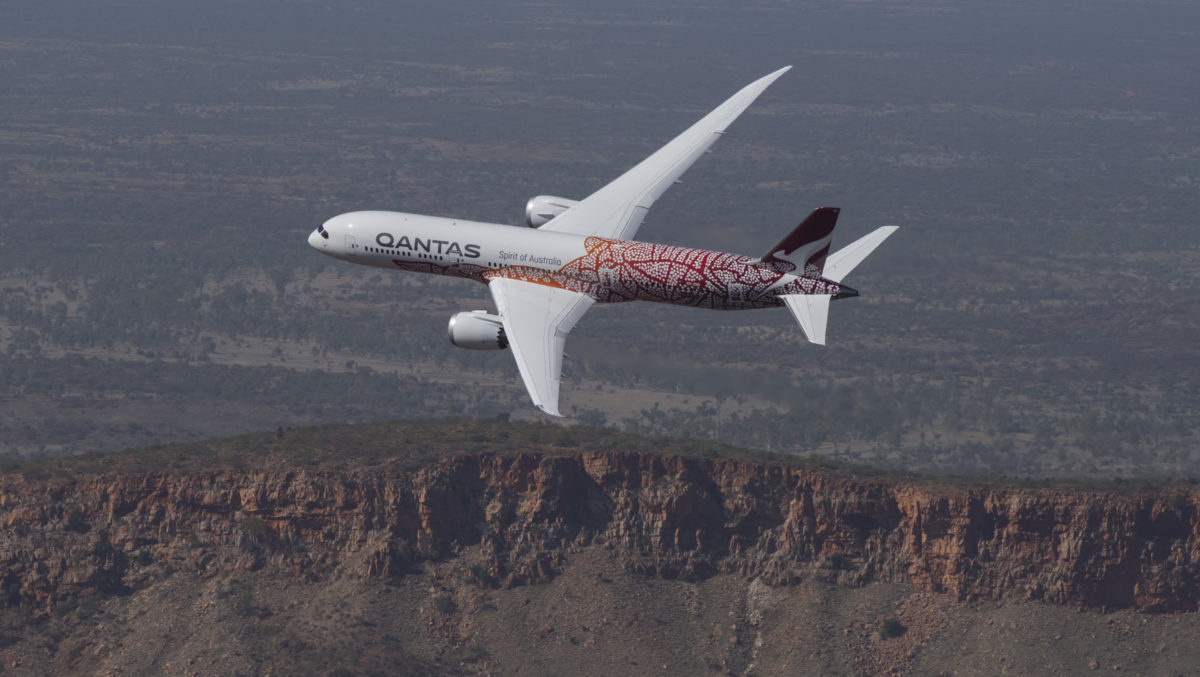Taking delivery of a new Boeing 787-9 Dreamliner, Qantas has commenced the first of three Project Sunrise research flights.
The aircraft, registered VH-ZNI, is currently operating QF7879 from New York JFK to Sydney non-stop with 50 passengers and crew on board as the first commercial airline to operate this route.
Qantas says the flight will take around 19.5 hours depending on wind and other weather conditions. As of 20:50 AEDT on the 19th of October, Flightradar24 is reporting the aircraft at 38,000 feet doing 482 knots.

The great circle distance of 16,200 kilometres compares to a travel time of 22 hours and 20 minutes, on the current New York to Sydney via Los Angeles flight.
As reported in August, the purpose of these record-breaking test flights is to conduct scientific research on passengers and crew on an ultra-long haul flight.
Qantas will use the data collected to increase health and well being on board flights of such duration, with the primary aim of minimising jetlag and identifying optimum crew rest and work periods.
Technical Details
Although the Boeing 787-9 won’t be used for the actual Project Sunrise flights, the aircraft is being used for the tests thanks to its convenient delivery location and range options.
101 tonnes of fuel is selected for these flights – the max capacity for Qantas’ 787 Dreamliners. Additionally, no cargo and the small amount of people on board allows the extra endurance of the aircraft.
The Maximum Takeoff Wight for a 787-9 Dreamliner is 254 tonnes, with QF7879 departing New York JFK with a weight of 233 tonnes. 1.5 tonnes alone is the galley equipment, food and beverages.
Once in Sydney only six tonnes of fuel will be left, equating to around 90 minutes of flight time.

As the aircraft progresses through its flight the pilots will climb to higher altitudes, eventually settling to 40,000 feet. The optimal cruise speed is Mach 0.85 (85 percent of the speed of sound) or around 930 kilometres an hour.
All of Qantas’ Boeing 787-9 Dreamliners are powered by General Electric Aviation GEnx engines, which is also the case for Qantas’ low-cost arm Jetstar on their 787-8s.
The Australian Civil Aviation Safety Authority will be working with Qantas and analysing the data collected, to help inform and possibly develop regulatory requirements with flights over 20 hours.
Project Sunrise Aircraft
Airbus and Boeing are fighting aggressively to win Qantas’ Project Sunrise order. Not only would the winner see record titles applied to the aircraft, but also end up being an A380 replacement in the future.
Boeing has offered their 777-8, however its development timeline will depend on customer demand; also pitched is the 777-9, which could act as a large aircraft replacement option particularly the A380.
Countering this offer is Airbus with the A350-1000. Weighing 45 tonnes less at takeoff compared to the 777X, Airbus has shown enormous amounts of confidence that they’ll win the order.

Various adjustments are being discussed with Qantas to increase the performance of the A350-1000, including bumping its range up 700 nautical miles to 8,700 nautical miles with 375 passengers.
Although not enough to fulfil the route lengths, the selection of cabin layout and other undisclosed upgrades will allow for the flights.
Yes or No Decision
Once the research flights are complete, Qantas will have to present their work and inform a final yes/no decision on Project Sunrise.
If approved, commercial flights would commence in 2022/2023 and end up being one of the most significant milestones in commercial aviation history.
For Australians and visitors, the launch of these flights would see a reduction of four hours thanks to the removal of a stop. The only current direct way to Europe is Perth to London Heathrow on a Qantas 787-9 Dreamliner.
Are you excited to see the results of these Project Sunrise test flights?




